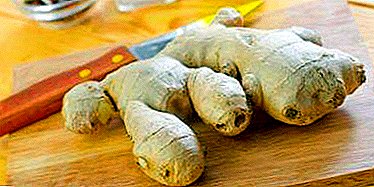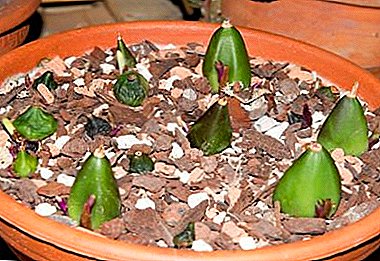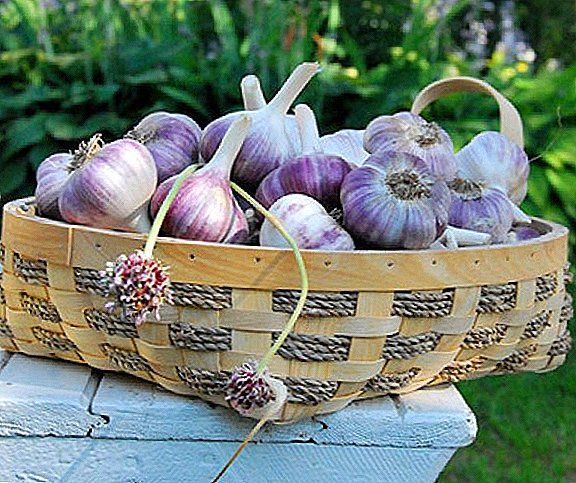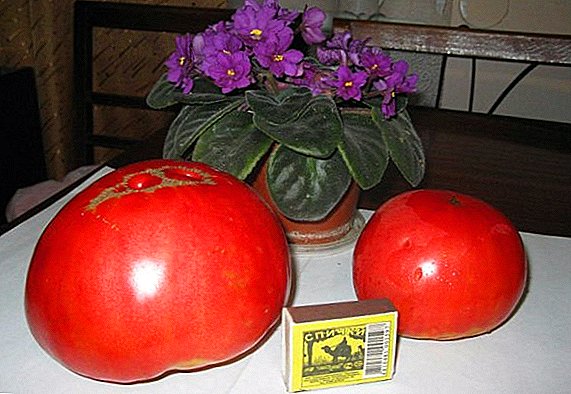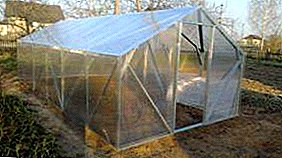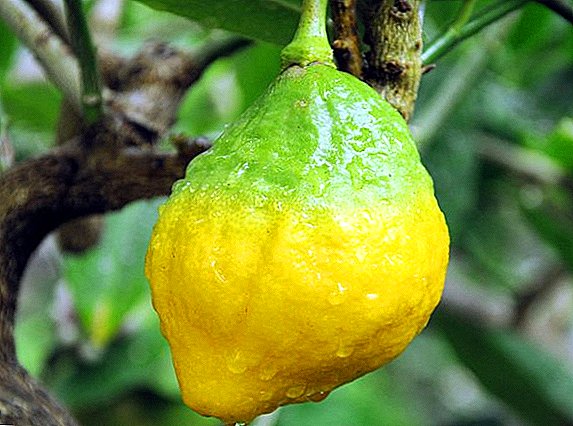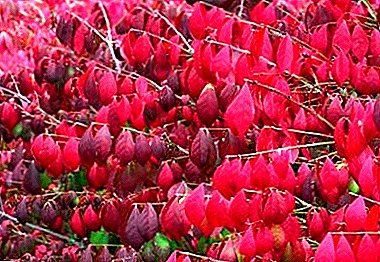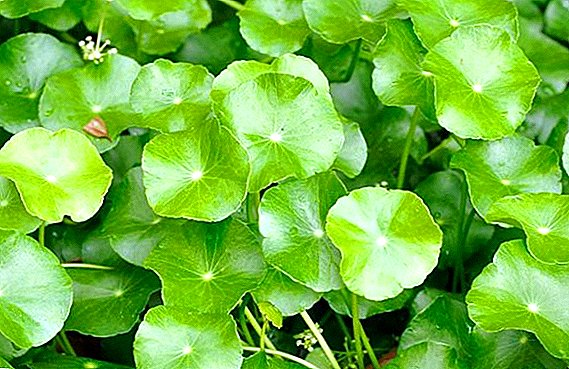 Those of you who have been to Asia have had the opportunity to try the amazing taste of the herb called "Centella Asiatic", which is very fond of the locals. However, not everyone knows that it has not only the original taste, but has long been used in traditional medicine for the treatment of many diseases. Let's take a look at the beneficial properties of this plant and find out how to grow it at home.
Those of you who have been to Asia have had the opportunity to try the amazing taste of the herb called "Centella Asiatic", which is very fond of the locals. However, not everyone knows that it has not only the original taste, but has long been used in traditional medicine for the treatment of many diseases. Let's take a look at the beneficial properties of this plant and find out how to grow it at home.
Botanical description
Centella Asiatic (Centélla asiática) belongs to the genus Centella of the umbrella family, it is a perennial creeping grass that blooms annually with a vein. 
The plant has weak stems, which are able to take root in the nodes, short green leaves, shaped like a bud, as they have a depression in the place of attachment to the short petiole. Grow on stems in a circle up to 4 pcs.
The umbrella family also includes such plants as root celery, cilantro, fennel, and parsley.
On leaf plates can be up to 9 streaks, at the edges are obtuse teeth.
At home, the Centella Asiatic is capable of growing up to 15 cm in height; it does not grow more than 2.5 cm in its natural habitat.
Small unsightly flowers grow on the stems in the spring, they are peach-colored with a touch of pink. Flowering ends in October, after which oblate dark brown round flowers are formed, which are called mericarpias. 
Other names of the plant are Gotu kola, tiger grass, thyroid leaf.
Did you know? According to legend, the name "tiger grass" Centella received for the fact that it likes to ride wounded tigers.
Spread
The natural environment for the growth of the Asian centella is Malaysia, Papua New Guinea, Sri Lanka, northern Australia, Melanesia, Iran, India, Indonesia. Prefers an Asian climate with high humidity, it can be found in the lowlands, ditches, etc. 
Chemical composition
The plant consists of the following elements:
- Essential oil containing pinene, myrcene and other substances that are used in medicine and cosmetology.
- Kempesterin and other substances characterized by high biological activity.
- Saponins are foamy substances.
- Polyacetylenes with antibacterial, antifungal, antiviral, neuroprotective, anticoagulant action.
- Flavonoids that strengthen the walls of capillaries have an antibacterial, antioxidant effect.
- Rutin, which strengthens the walls of capillaries, inhibits the formation of blood clots, acts as an antioxidant.
- Quercetin - has antioxidant and anti-inflammatory effects.
- Alkaloids that are part of many drugs in official medicine.
- Tannins with anti-toxic, antidiarrheal, antihemorrhoidal, hemostatic effect.
- Kempferol - has a diuretic and tonic effect.

Application of Centella Asian
Centella Asiatic is used in folk medicine, cosmetology, and cooking.
In folk medicine they also often use such plants as Lyubka bifolia, grass, feather grass, saffron, dodder, scorzonera, nasturtium, skoumpia, autumn crocus.
In medicine
In Asian folk medicine, the plant is used for such indications:
- leprosy (leprosy);
- tuberculosis;
- malaria;
- syphilis;
- eczema;
- psoriasis;
- cold;
- fever;
- bronchial asthma;
- headache;
- diarrhea;
- dysmenorrhea;
- bedsores;
- nephrolithiasis;
- lumbago;
- urolithiasis disease;
- dysentery;
- hemorrhoids;
- cervical dysplasia;
- jaundice;
- obesity;
- myopia;
- phlebeurysm;
- encephalopathy;
- hypertension;
- glaucoma;
- injuries of the skin;
- periodontitis;
- lymphostasis;
- epilepsy;
- scleroderma;
- Alzheimer's disease;
- fetal hypoxia;
- traumatic brain injury;
- convulsions;
- menopause;
- nervous breakdown.

Centella Asiatica has such useful properties:
- stimulates the psyche;
- tones the body;
- fights against putrefactive processes;
- removes fluid;
- cleans the intestines;
- helps in the fight against skin diseases;
- eliminates inflammatory processes in the joints;
- improves memory;
- strengthens the nervous system;
- slows the aging of the body;
- increases life expectancy;
- strengthens the immune system;
- improves adrenal glands;
- cleans the blood, improves blood circulation;
- helps with high body temperature;
- improves performance

In cosmetology
Cosmetological application of the plant:
- anti-cellulite agent;
- reduces sweating;
- faded skin masks;
- tonic for tired skin;
- remedy for stretch marks;
- for sucking scars;
- for softening corns and corns;
- antifungal agents;
- Body Scrub;
- hair masks;
- Toothpaste.

In cooking
Centella is added to many delicacies of Asian cuisine, as it gives them a unique taste (sweet and sharp at the same time). From the leaves and flowers of the plant brew tea, make broths with milk, add them to salads, the roots are used in the preparation of main dishes (for example, add boiled rice).
Did you know? There is another legend in Asia - Lee Chun Yun, a famous folk healer, has lived for 256 years due to his daily consumption of Asian centella tea.
There are biologically active supplements based on the leaves of the plant.
However, they are not recommended to use:
- people with hypersensitivity;
- pregnant and lactating women, children;
- cancer patients;
- in the postoperative period;
- people with diseases of the gastrointestinal tract;
- those who suffered a stroke and other people with problems with the blood supply to the brain.

Home cultivation
You can grow Centella Asiatica yourself if you become familiar with the basic rules.
Choosing a landing site
It is possible to grow Centella in pots and open ground, in light shade, avoiding direct sunlight, especially in the middle of the day.
Important! Gota cola - heat-loving plant, temperature should be above zero.
Centella tolerates warm winters well, if in your region there are other climatic conditions, it must be transported to a room. In early spring, when the risk of frost is still high, it needs to be covered with a film. 
Soil and fertilizer
For planting is well suited soil with a high content of sand, rich in mineral fertilizers, well loosened, with a mandatory drainage layer, with low acidity.
Mineral fertilizers include such as "Sudarushka", "Master", "Kemira", "Ammophos", ammonium nitrate, "Plantafol".
It is good if a layer of peat and compost is laid at the bottom.
Watering and moisture
The plant loves moisture, therefore needs daily plentiful watering. Do not let the soil dry out, in nature it grows in wetlands.
Breeding
Centella is propagated by Asian seeds or ground shoots. When planting seeds, keep in mind that in such a way it is better to propagate in a greenhouse or at home in pots, and replant already grown seedlings. 
- Choose a place for a pot.
- Prepare the soil, fill it with water
- Put a seed, lightly press it, the depth should not interfere with the seedlings.
- The time of germination of seedlings - from 1 month to six months, depending on the season and temperature.
- For planting in open ground, select a place, loosen the soil.
- Dig a hole 2 times the size of the roots.
- Lay out peat and compost.
- Tamp the earth a little, pour it abundantly.
- Transfer the seedlings, sprinkle with earth.
Ground shoots Gotu Cola breeds independently.
Important! If you plant a thistle in open ground, install barriers, otherwise it will soon survive all other plants, capturing the territory.
Collecting and harvesting
To get the maximum effect from the plant, it is harvested before flowering begins - in early spring. For this purpose, the centella is dug out entirely, along with the roots, leaves and stems. 
Dried the plant without access to sunlight, avoiding high temperatures, then crushed.
It is necessary to store the prepared raw materials in a dark, dry, warm (but not hot) place up to 2 years.
Pests, diseases and prevention
Known pests of the Centella Asiatic plants are not striking, problems may arise if:
- The plant is not watered enough - dry soil is the enemy of the plant, it can dry out.
- The plant has been subjected to the influence of low temperatures - freezing also damages the thyroid and leads to its death.
- The soil is too acidic, depleted - the growth of tiger grass in such conditions becomes more complicated.
- In the area where Gotu Cola grows, there is no shadow at all - the plant will get burns.
- It is not warm and humid in the place where the seeds are planted - the thyroid seeds sprout only when the necessary conditions are met, otherwise the germination period is increased.

To avoid this, follow the specified breeding recommendations.
Thus, Centella Asiatic has long been known to residents of Asian countries as a tasty seasoning, additive in cosmetic products and an effective drug. Many interesting legends have long formed around her.
Today, you can feel the effect of this plant far from its homeland, taking dietary supplements based on it, using cosmetic means or growing it yourself.
Feedback from network users




